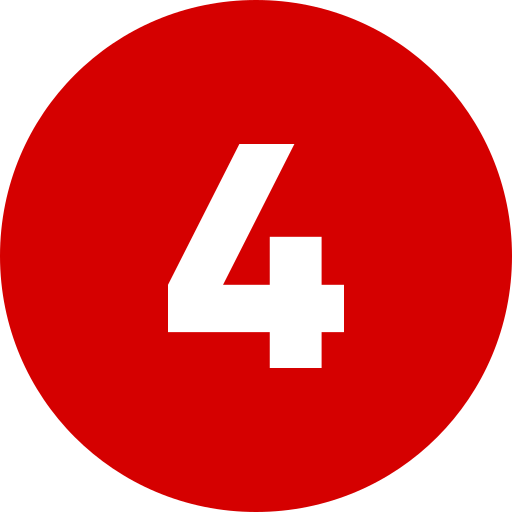Improving Results- Evaluating and Taking Action (IRETA)

Improving Results- Evaluating and Taking Action is a two-day program that provides managers with a set of tools to evaluate and identify actions to improve work unit results. Participants will design mission statements and operationalize work unit measures, allowing work units to be directed toward the desired results. In addition, participants will learn to apply five tactical actions to empower employees to implement the actions necessary to improve work unit results.
Similarly, Improving Results- Setting the Direction is a two-day program that provides managers with a set of tools to achieve higher performance from their work unit. Participants will learn to apply a process to Define, Stabilize, and Improve a work unit. A method to create a Work Unit Improvement Plan is presented. Other topics include Aligning Resources, Achieving Buy-In, and Prioritizing areas for improvement. The program is designed for executives, supervisors, senior managers, middle managers, and new managers.
Approach of the Improving Results- Evaluating and Taking Action Program
In this Improving Results- Evaluating and Taking Action course, participants will learn to apply five tactical actions to empower employees to implement the necessary actions to improve work unit results.
Leadership Solution
Get In Touch
Step-by-Step Action Plan for Improving Results- Evaluating and Taking Action
I. Welcome and Program Objectives
Objective : This module aims to help you understand the program goals and identify the benefits to you and your company.
- Describe the Program goals and identify the benefits to you and your company.
- Understand the unique qualifications of the session leader and how those qualifications will benefit you.
- Understand why it is critical to the success of the company that a manager quickly sets the direction for achieving improved results.
- Identify how control, influence, and lack of control may impact employee activities, actions, and behaviors.
Objective : This module will help participants learn to focus on overall business results and create specific work unit measures.
- Apply a process that links individual employees, the work unit, and the business unit results to the overall strategy of the organization.
- Distinguish between the results necessary at each level of the organization.
- Identify specific measures for each work unit.
- Track specific measures through the use of the “Work Unit Cockpit.”
II.Focusing on Results
III. Applying the D.S.I. Process
Objective : In this module, you will learn to apply the D.S.I. process to improve the performance of a work unit quickly.
- Identify the elements of the D.S.I. Process.
- Follow a system for successfully implementing the D.S.I. Process in your work unit.
- Recognize the realities of improvement and the challenges that must be overcome to sustain work unit improvements.
- Identify how the D.S. I. Process provides the equilibrium necessary for managing daily work and achieving breakthrough improvements.
- Identify how to implement the D.S.I. Process to create your own “Island of Excellence.”
Objective : Participants will learn to identify the obvious problems that are inhibiting their work unit from achieving its expected results.
- Identify obvious problems within your work unit.
- Conduct successful interviews to finalize your Fix Obvious Problems Worksheet.
- Create an action plan to solve your obvious problems.
- Establish stability within your work unit by fixing your obvious problems.
IV. Fixing Obvious Problems
V. Identifying Work Unit Improvements
Objective : This module will help you apply a process for identifying specific actions necessary to improve work unit results.
- Graph the challenges faced by your work unit.
- Use the Structure Tree Approach to identify the issues that hinder your work unit from achieving its expected results.
- Identify the actions necessary to stabilize further and improve your work unit.
- Confirm that your selected actions will, in fact, help you achieve improved results.
Objective : Participants will learn to construct a Work Unit Improvement Plan that sets the direction for their work unit to achieve its intended results.
- Identify and define the elements of a Work Unit Improvement Plan.
- Create your Work Unit Improvement Plan.
- Gain commitment from employees to help implement your Work Unit Improvement Plan.
- Identify the resources that must be aligned to implement your Work Unit Improvement Plan.
- Confirm the validity of your Work Unit Improvement Plan before submitting the plan to top management.
VI. Creating the Work Unit Improvement Plan
VII. Preparing Professional Management Presentations
Objective : Here, participants can learn to prepare a professional management presentation that conveys the intended information and moves employees to action.
- Analyze your audience to communicate presentations effectively.
- Identify the basic components of presentations.
- Manage the fear of giving presentations by achieving self-confidence.
- Handle the tough questions that often follow presentations.
Objective : This module will guide you through using a one-on-one meeting process to secure management approval for your Work Unit Improvement Plan.
- Confirm the importance of gaining management approval for your Work Unit Improvement Plan.
- Design a written proposal for your Work Unit Improvement Plan.
- Prepare for a one-on-one management meeting.
- Conduct a one-on-one management meeting with your manager.
- Deliver a successful presentation of your Work Unit Improvement Plan.
VIII. Gaining Management Approval
IX. Creating Employee Buy-In
Objective : Here, participants will learn how to gain buy-in of your Work Unit Improvement Plan from employees.
- Explain the importance and relevance of employee buy-in of your Work Unit Improvement plan.
- Differentiate between a meaningful and a less-than-effective presentation of your Work Unit Improvement Plan.
- Evaluate the success of your presentation based on the four key elements of a group presentation.
- Demonstrate your ability to deliver a successful presentation.
Objective : In this module, participants will learn how to apply transitional leadership skills to lead their work unit through change.
- Learn from past successes by identifying actions and behaviors that create followership.
- Choose appropriate actions to lead employees as they transition through the three levels of change.
- Use personal power and positional power effectively to provide direction and gain participation during periods of change.
- Identify the key behaviors of effective transitional leaders and observe how they achieve effective change.
- Apply transitional leadership techniques in your work units.
X. Leading Through Change
XI. Change and Resistance to Change
Objective : This module will teach you about how to overcome resistance to change.
- Explain how there is both danger and opportunity with change.
- Identify the five types of loss and describe what you can do to move employees past the loss.
- Explain how employees move through the four phases of change.
- Accurately diagnose each phase of change.
- Take actions to move an employee or organization through the four phases of change.
- Minimize resistance to change with clear communications.
Objective : In this module, you will create a Personal Transfer Plan to apply the skills you have learned in this Program back on the job.
- Identify the keys for successful implementation of the IMPROVING RESULTS– SETTING THE DIRECTION Program.
- Utilize various job tools to ensure the transferability of your skills back on the job.
- Create a Personal “Transfer Plan” to identify the actions you will take to achieve skill transfer.
XII. Putting It All Together
XIII. Topics Covered Under the Program
- The Strategic Manager
- Understanding Your Mission
- Operationalizing Work Unit Measures
- Evaluating the Work Unit to Effect Improvement
- Evaluating the Work Unit to Effect
- Improvement (Part Two)
- Creating Your Influence Plan
- Achieving Results Through Visual
- Communications
- Aligning Individual Performance
Key Takeaways of the Improving Results- Evaluating and Taking Action Program
Following the Improving Results- Evaluating and Taking Action Program, you will achieve the following competencies:

Describe the Program goals and identify the benefits to you and your company.

Recognize the unique qualifications of the session leader and how those qualifications will benefit you.

Identify why it is critical to the success of the company that a manager quickly sets the direction for achieving improved results.

Identify how control, influence, and lack of control may impact employee activities, actions, and behaviors.
Learning Formats
The Improving Results- Evaluating and Taking Action Program of DTCI offers a unique and detailed training program to help participants achieve the desired outcomes.
In-person Workshop- Duration (2 Days)

Core Beneficiaries of the
Improving Results- Evaluating and Taking Action Program
The Improving Results- Evaluating and Taking Action training program is best designed for executives, supervisors, senior managers, middle managers, and new managers.
FAQs
The participants of the Improving Results- Evaluating and Taking Action Program is known to provide several benefits that are listed as follows:
1. It helps participants learn essential skills to make data-driven decisions.
2. Improved processes lead to better resource utilization.
3. Focused strategies help in meeting organizational goals.
4. Equips employees with the skills to take proactive actions.
The Improving Results- Evaluating and Taking Action Program offers numerous advantages to business organizations to ensure optimum results. Some of the importance of this leadership development program are described as follows:
1. Performance Improvement: It helps identify and address performance gaps.
2. Strategic Alignment: The program ensures that actions are aligned with organizational goals.
3. Competitive Advantage: It helps organizations stay ahead of their rivals by continuously improving.
4. Sustainable Growth: The program promotes long-term success through effective action plans.
The Improving Results- Evaluating and Taking Action Program can help employees of an organization in multiple ways. Listed are some of its crucial benefits for employees.
1. Improves critical thinking, data analysis, and decision-making skills.
2. Empower employees to take the initiative and contribute to organizational improvements.
3. Prepares employees for higher roles and responsibilities through practical training.
4. Increases job satisfaction by involving employees in meaningful improvement processes.
5. Fosters teamwork and collaboration by encouraging shared problem-solving efforts.
6. Provides opportunities for employees to be recognized for their contributions to organizational success.
7. Offers employees the right tools and strategies to adapt to changes and drive continuous improvement.
